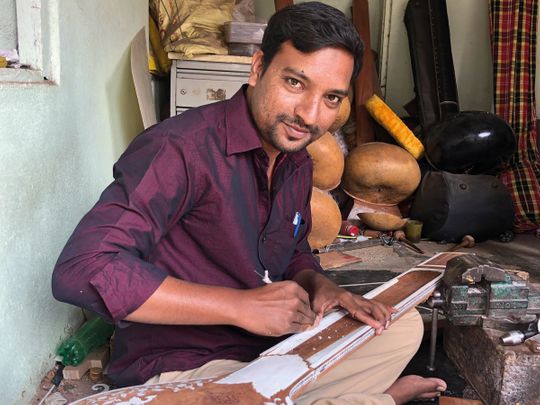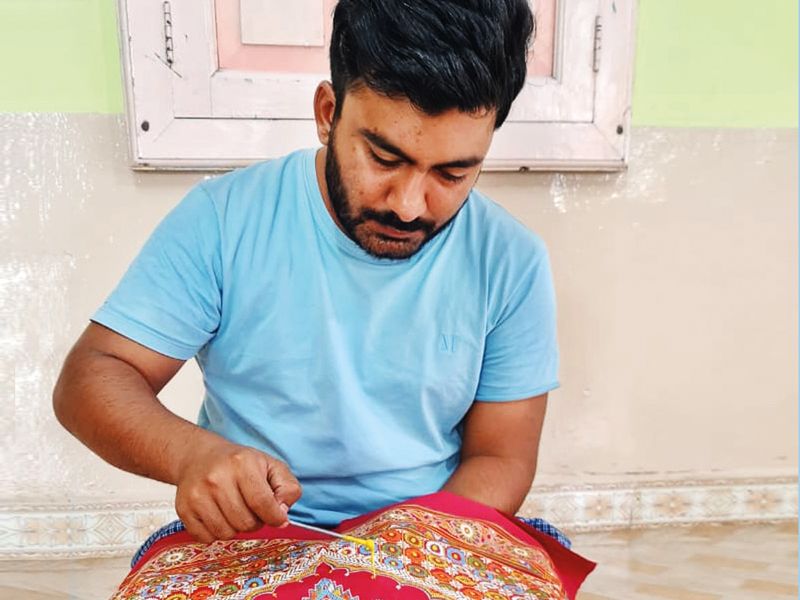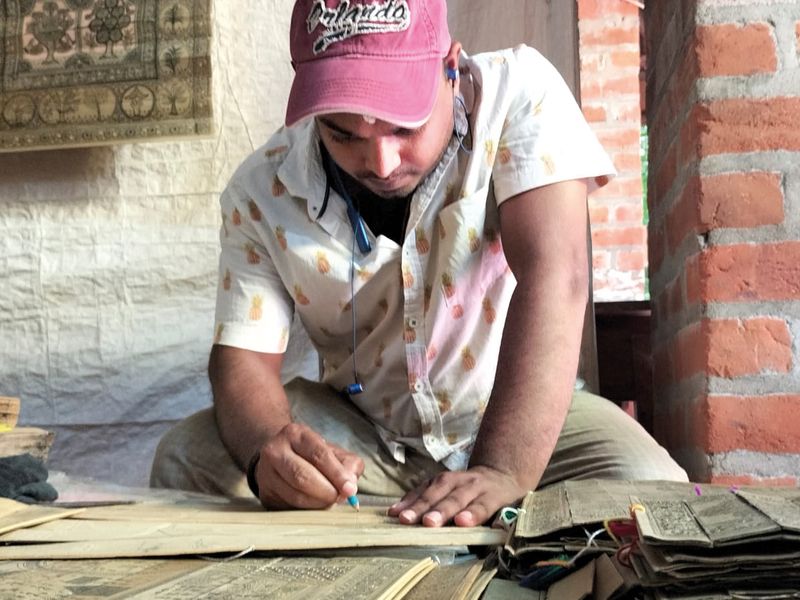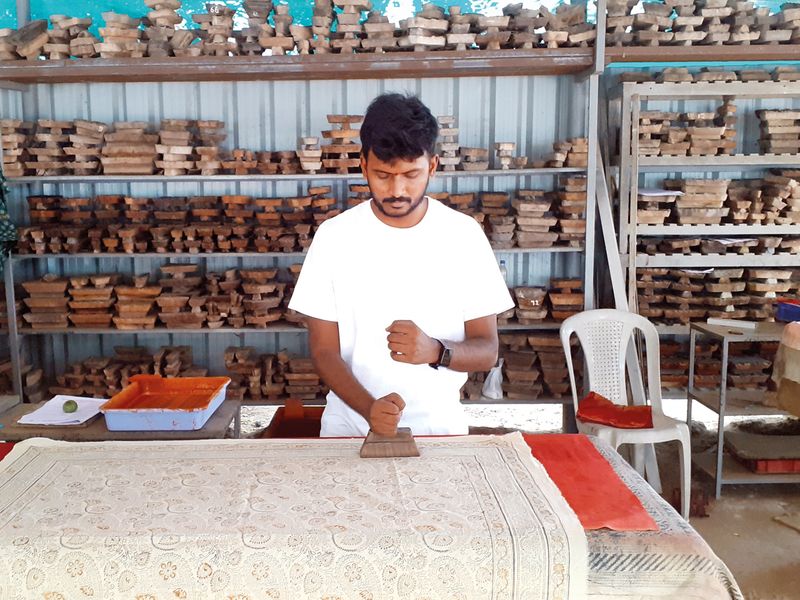
In an era when fast fashion and mass-produced goods are the norm, handmade products hardly find any patrons. In fact, very few consumers are even aware of the existence of hand-crafted products. Even if they do, the lack of affordability and accessibility of handmade goods put many consumers off.
Yet, despite the dwindling demand and the shrinking cottage industry, much of India’s handicraft tradition continues to survive the onslaught of industrialisation.
Every day, an astonishing array of artefacts are crafted by the skilful hands of master artisans who are the last torchbearers of rare knowledge and skills accumulated over centuries.
From hand-woven sarees and shawls to hand-printed fabrics and handmade shoes and accessories, the world of handloom and handicraft is quietly churning out exquisite merchandise.
Despite the decline, handicraft forms the biggest employment sector in rural India, after agriculture. India is home to around 20 million artisans, predominantly based in the villages, carrying forward the ancient traditions of the country.
Lack of demand for their products, poor marketing and low margins of profit are among the primary reasons many artisans are giving up their craft or the younger generation not taking up their ancestral tradition.
However, not all is lost. From the ashes of the crumbling traditions young men continue to rise like a phoenix. With every four youngsters abandoning the tradition, one is joining the force, keeping the wheel of the real Indian heritage rolling.
Strings attached
On the southern tip of India’s western state of Maharashtra lies the dusty small town of Miraj, which is known for producing Indian classical stringed instruments such as tanpura and sitar.
Artisans are carrying the tradition forward that dates back to the 1850s when a bunch of sword-makers repurposed their skills to become sitar-makers as the demand for swords declined due to innovation in weaponry. Now, the descendants of the 19th century artisans Farid Saheb and Moinuddin Saheb populate Miraj’s Sitarmaker Street and its adjoining serpentine alleys.
Though, like most handicraft traditions in India, the state of Miraj’s instrument-making has been in general decline, the infusion of young blood like Abdul Qayyum has brought in new vigour to the tradition.
Qayyum is the son of master artisan Shahbuddin and a sixth-generation descendent of one of the original artisans, Moinuddin Saheb.
Among the innovations he has brought in are the use of the internet to popularise his art and customisation of the instruments according to the requirements of foreign customers.
“Most of our business now happens on the internet. Our Instagram page is very popular. We get a lot of enquiries and orders from Western countries and we customise instruments according to their requirements,” says Qayyum, who is mixing tradition with innovation. The 29-year-old says he learnt his craft by watching his father and grandfather work and continues to work under his father’s supervision, widening the scope of the family heritage.
Painting without a brush

Gujarat’s Kutch district is known for a range of crafts, but among its most renowned arts is the rogan painting from the town of Nirona. The town once had several families practising the craft, but now a single family is the torchbearer of this unique heritage.
The Khatri family of Nirona is led by Padmashree Award-winning artisan, Abdul Ghafoor, who began popularising rogan in the 1980s as it was until then just a folk tradition. His efforts saved the craft from a certain death.
Ghafoor’s son, Sahil Khatri is the youngest in the family of artisans to win an award for his work.
At the age of 25, Khatri is already a multi-award winning artisan, winning his first state accolade in 2011 at the age of 14.
“I have been interested in rogan art since I started watching my father work as a little boy. I was not interested in schooling, so I dropped out after grade eight and joined the family tradition full time. This craft is 300 years old and I am the eighth generation in my family to practise this tradition,” says Khatri, who is experimenting with new designs.
Rogan art is a complex process of creating design on fabrics using a sticky substance made of castor oil and mineral-based pigments.
The creation of the rubber-like substance (rogan, which means oil-based) involves intermittent heating and cooling of castor oil over three days among other steps. Once finished, the substance is applied over handloom fabrics in various design forms using a metal stick like tool called qalam.
Leafing through mythology

Odisha is known for various craft and heritage traditions that date back millennia and Pattachitra is among its most legendary arts, a tradition it shares with the neighbouring state of West Bengal. Considered more than 1,000 years old, the Odiya tradition of Pattachitra is unique as it is inspired by the ancient murals from the temples of Puri, Konark and Bhubaneshwar.
Jagjeet Paikera hails from the heritage town of Raghurajpur in Odisha’s Puri district, which is considered the best for the heritage paintings of Pattachitra.
He is among the young generation of artisans in the village where everyone practises the legendary craft, engraving portraits and images on palm leaves.
“Paintings in Odisha happen on three mediums, cloth, palm leaf and walls. I can do all forms but my best comes out on palm leaf. I love this craft. I learnt from my grandfather and father. In my family and village every single person is an artist, but we all have our strengths and we learn from each other,” says Paikera, who travels across the country to promote the legendary craft in exhibitions.
Pattachitra is a narrative scroll art, often depicting Hindu mythology, borrowing heavily from the epics of Ramayana and Mahabharata.
Apart from the process of painting, which takes several days to make, the craft involves several steps of preparation including the cutting of the leaves, soaking the leaves in turmeric-mixed hot water, charcoal application, tying the leaves together with thread and finally painting or engraving. A typical painting takes seven to eight days to complete.
Reviving an ancient imprint

Varun Srinivas is an engineer by training and a third-generation Kalamkari artisan from Pedana, near Machilipatnam in Andhra Pradesh.
Following his graduation in 2014, the 29-year-old chose to join his ancestral business instead of taking up an IT job as he was keen on helping his father popularise the ancient tradition of Kalamkari.
The small town of Pedana is famous for natural handblock-printed Kalamkari craft and Varun’s father, Pitchuka Srinivas is the most celebrated artisan in town. Together with his father, young Varun is now carrying forward the centuries-old tradition and taking it to distant shores.
“I used to see Kalamkari work since childhood. Earlier, the printing was bad, and we were mass-producing, so it never fascinated me. One day when I came back from college, I saw some beautiful fabrics and prints and that’s when I fell in love,” says Varun, who now helps his father not only run his growing business with an international clientele but also manages a museum of Kalamkari.
He is a third-generation artisan in his family and Kalamkari in Pedana was popularised by his grandfather Pitchuka Veera Subbaiah, but the craft has a history of more than 400 years in the region, mainly in the neighbouring port town of Machilipatnam.
Kalamkari is an intricate craft with artisans working over several days through a range of steps to complete a piece of art. Apart from block printing, which is the mainstay of the craft, the work involves bleaching, creating natural dyes, washing the fabric in flowing streams, soaking as well as herbal treatment. ●












